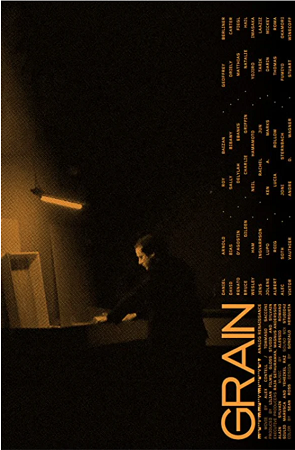
Grain: Analog Renaissance 2022
Distributed by Collective Eye Films, 1315 SE 20th Ave. #3, Portland OR 97214; 971-236-2056
Produced by Magnus Andersson, Alex Contell, Tommaso Sacconi, Raja Sethuraman, and Alain Sylvain
Directed by Alex Contell and Tommaso Sacconi
Streaming, 80 mins
Middle School - General Adult
Art History; Photography
Date Entered: 08/08/2023
Reviewed by Dorian Bowen, Archivist/Film HistorianWhen Kodak filed for bankruptcy in 2012, pushed to the brink by the Great Recession and the explosion of digital photography, many saw it as the death of film. But a decade later, a return to non-digital photography, also known as analog, is on the rise.
Grain: Analog Renaissance follows several professional photographers, predominantly in New York City, who discuss the craftsmanship of working with film stock and its creative and technical implications. It demonstrates processes around stock, development, scanning, and printing. It touches on equipment and methods, such as optical printing and wet-plate photography.
Unlike digital cameras, that use an electric sensor to quickly manufacture an overwhelming quantity of flawless but aesthetically limited images, film is a high-risk high-reward venture with an intrinsically distinct look and a color palette than cannot be duplicated by other means. Additionally, many photographers cite the inability to have that immediate feedback we have grown used to with digital tools, as the key to being present in the moment. Therefore, a tacit undercurrent of the documentary is the psychology behind photography as an art form.
At the time of filming, it was estimated that approximately 90% of photos were taken on mobile devices. In 2023, this figure has reached 93%. Have digital cameras affected our attention, shifting our focus away from the life we are trying to capture? And how is it for some that the limitations of film (compared to digital) lead to greater ownership and pride in the final work?
Though it is clear the documentary is in favor of film; it does not fight the prevalence of digital. Instead, it makes a case that appreciation for the art of film photography, and the preservation of the techniques associated with it, deserve a place in the future as well. An analogy presented by one interview subject summed it up best - a world with just digital photography would be as uninteresting as an orchestra with only a single instrument.
Grain is recommended for a wide range of audiences. However, the younger the audience perhaps the greater the inspiration. Increasingly, all that children and teenagers in the 21st century are likely to know is digital, so exploring film photography as an alternative would be an exciting addition to any curriculum. A lesson plan that supplements the screening with information about purchasing equipment, and local vendors or facilities to assist with developing film stock, would be ideal.
Awards:Cleveland International Film Festival - Nominee (2022); Ad Hoc Docs Competition
Published and licensed under the Creative Commons Attribution 4.0 license. Anyone can use these reviews, so long as they comply with the terms of the license.